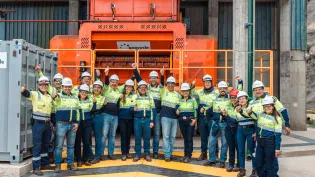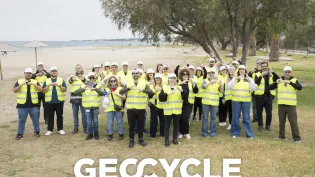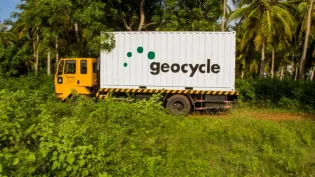Our principles
Geocycle has been promoting proper waste governance and setting industry-leading standards in our operations for more than 40 years.
Our operational principles follow strict criteria to ensure the consistent implementation of our waste management solutions.
Our waste management solutions must respect the waste hierarchy. This means we advocate top priority to waste prevention, followed by reuse and recycling, and then lastly recovery of the non-recyclables.
Our environmentally-conscious methods contribute to the circular economy by recovering the thermal energy and recycling the raw materials, thus limiting reliance on fossil fuels and natural raw materials.
Our air and water emissions from waste treatment must not be higher than the emissions from cement production. Additional emissions and negative effects must be prevented or kept to a minimum.
Furthermore, cement products must not be used as a sink for toxic or potentially toxic elements.
To keep operations consistent, any partner company involved in waste treatment must meet Geocycle standards. These companies must carry out audits or verification procedures to monitor inputs and production guidelines.
Only suitable waste streams will be selected for treatment to establish quality control, proper handling and stable kiln operations.
Any partner company involved in waste management must have risk management protocols and personnel in place to ensure the health and safety of employees, contractors and visitors. Companies must also store safety compliance records.
Geocycle teams must be able to identify, detect and manage any potential hazards and take preventative measures to reduce the manifestation of risks.
Monitoring and auditing systems need to be established to enable the successful implementation of Geocycle procedures and standards.
Skill development and training must also be available to all Geocycle teams to ensure consistent application and understanding of Geocycle technology.
Geocycle aims to drive local economies and improve the livelihoods of communities around the world.
Companies must consider local and country-specific needs before implementing waste management solutions. This includes consulting with the existing waste management value chain and informal waste workers.
Companies involved in waste management must also be transparent with the public, relevant authorities and stakeholders.
All waste management must have a financially sustainable business model that brings value to the stakeholders and local communities involved.
Financial systems must also be in place to ensure that interventions have medium to long-term financial coverage.
Waste management solutions must be in line with relevant international agreements and comply with laws and regulations. Any country-specific requirements must be mentioned in the regulations and procedures.
International best practices can be applied if the local legal framework is not available or consistent to establish the required capacity and institutional arrangements.
Our guidelines
Geocycle works with the waste regulatory framework in each country we work with and provides sustainable solutions to local objectives.
Our scientifically proven solutions are recognized by leading authorities in the industry, including the Basel and Stockholm conventions. They are also recognized by countries including India, Mexico, and the United States.
In collaboration with GIZ, FHNW, and LH, we have developed guidelines on co-processing waste materials in cement production to support the development of environmentally sustainable and safe waste treatment.
Our guideline objectives:
- Contribute to the improvement of poor waste management practices in low-and-middle-income countries
- Promote pre-treatment and co-processing as a competitive waste management solution
- Facilitate the collaboration between the public and private sectors regarding waste processing
- Set ambitious global standards for companies active in pre- and co-processing
- Propose skill development opportunities to ensure consistent application and understanding of industry technology
- Develop connections for organizations, institutes and companies active in the pre- and co-processing field

















